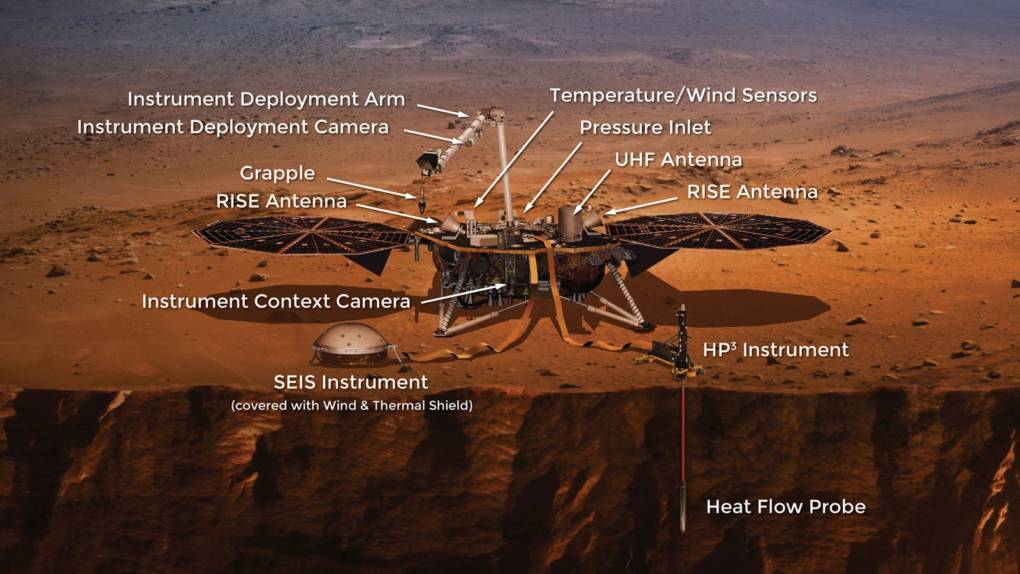UPDATE 7:30 p.m., Mon.
Phew! Took a little while but we have word now that InSight’s solar panels are open and collecting sunlight. This solar-powered robot is ready for action.
Aaah…soaking up the Sun with my solar panels. 🌞 After a long flight, and thrilling #MarsLanding, it feels great to get a good stretch and recharge my batteries. (Like, literally.) It’s just what I’ll need to really start getting in tune with #Mars. https://t.co/yse3VEst3G pic.twitter.com/LpsiI0KNNz
— NASAInSight (@NASAInSight) November 27, 2018
Data from Odyssey indicate @NASAInSight’s solar arrays are open and batteries are charging. The transmission also included this view from the instrument deployment camera, showing the seismometer (left), grapple (center) and robotic arm (right): https://t.co/yZqPextm89 pic.twitter.com/2kBHT5caGS
— NASA JPL (@NASAJPL) November 27, 2018
In all, it was a big day for InSight, its team and its fans, both those on Earth and off.
The @NASAInSight team got a special congratulations from the @Space_Station today! #MarsLanding pic.twitter.com/qoZHtkYT9w
— Jim Bridenstine (@JimBridenstine) November 26, 2018
UPDATE 12:50 p.m., Mon.
Ben Burress, Chabot Staff Astronomer and KQED’s space blogger, gives us an overview of the day and a preview of what’s ahead for InSight.
As we wait for InSight’s next check in (confirming if the solar arrays are deployed OK) @ChabotSpace‘s Ben Burress looks ahead to what’s next for the mission. pic.twitter.com/SF3gdjszVO
— Danielle Venton (@DanielleVenton) November 26, 2018
And, that’s it for now folks! Later today we’ll update once NASA’s Mars Odyssey orbiter confirms that InSight’s solar arrays have deployed. This may happen around 5:35 p.m. Pacific, but could be many hours after that. Once the solar panels are out, the two-year surface phase of this mission has officially begun.

